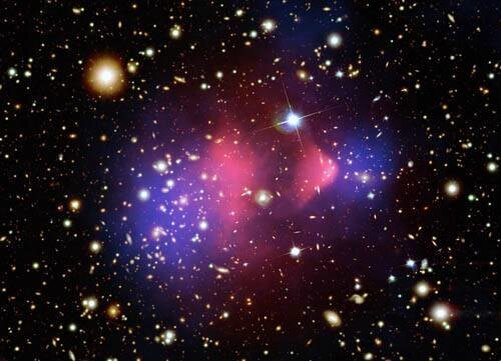Exploring the Existence of Dark Matter, Dark Energy, and Dark Flow
Written on
Chapter 1: Understanding Dark Flow
A reader recently posed an intriguing question: Is it possible that dark matter, dark energy, and dark flow might not exist at all? Could we simply be misinterpreting established physical laws, or might there be influences from alternate dimensions that we cannot perceive?
To address this, let's first look at Dark Flow.
Dark flow refers to the synchronized movement of galaxy clusters stretching over 3 billion light-years. While this phenomenon is unusual, it does not violate any known physical principles. However, its existence has only been confirmed by a single research group. Other independent investigations into the same clusters have not found evidence of any coherent galaxy movement, suggesting that dark flow may not exist.

The uncertainty surrounding these findings leaves the question of dark flow's existence unresolved. Ongoing observations and analyses from various research teams will be necessary to clarify this matter.
Section 1.1: The Reality of Dark Energy
Moving on to dark energy, this unique form of energy is responsible for the Universe's accelerated expansion. The acceleration itself is well-documented and supported by extensive observational evidence. As the Universe continues to expand at an increasing rate, there must be a force driving this phenomenon, which scientists have termed dark energy.

While dark energy is a scientifically accepted concept, its true nature remains elusive. It could represent an adjusted theory of gravity or a different type of matter altogether. Research indicates that the cosmological constant, proposed by Einstein, is the most viable candidate for dark energy. This constant fits neatly into Einstein's equations to describe the Universe's accelerated expansion, yet its physical implications and underlying mechanisms are still not fully understood.
Subsection 1.1.1: Investigating Dark Matter
Dark matter is a hypothesized form of matter that does not engage in electromagnetic interactions, making it invisible to direct observation. The concept arose from the hidden mass issue: galaxies and their clusters exhibit behaviors suggesting they contain far more mass than we can detect. This discrepancy could imply an inadequacy in our gravitational theories or indicate that there is indeed more mass present than we can observe.

The Bullet Cluster collision presents a compelling case for dark matter's existence, showcasing the disparity between visible mass and mass inferred through gravitational lensing. In my view, the likelihood of dark matter's existence is approximately 99.99%. Regardless of how we adjust gravitational theory, it fails to replicate the effects attributed to dark matter. Conversely, introducing dark matter provides a straightforward solution to the hidden mass problem and elucidates numerous other cosmic patterns. Nevertheless, it remains possible that a more accurate gravitational theory is yet to be formulated.
In the next two decades, several significant experiments are planned to search for dark matter particles, and we eagerly await the results.
Chapter 2: Engaging with Our Content
If you wish to see more articles about space in your feed, please clap!
Additionally, consider subscribing to our channel and feel free to submit your questions, which I will address in future articles.
If you appreciate my work, you can support me by becoming a Medium member for just $5 a month, which will help us produce even higher-quality content.